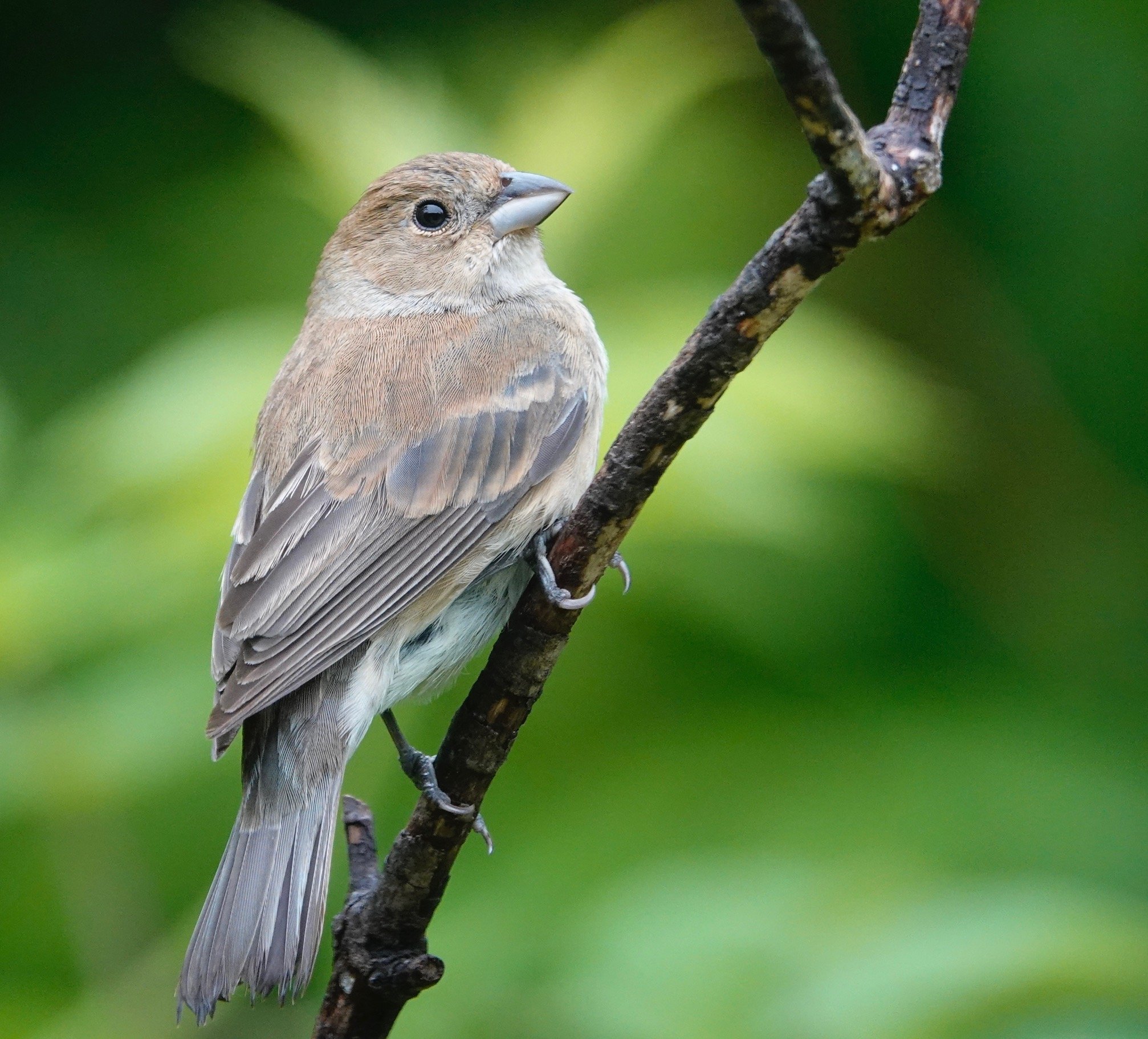Naturally
I watched a couple of turkey vultures make Venn diagrams in the sky and spotted hoofed ruminants that are deer to us. A crow dipped a colorful snack bag in the water of a pond. I don’t know what was in it. Crows are notorious for soaking food in water. They’re not cleaning it and it's more than softening the food to make it more palatable. Baby crows rely on parents to provide foods containing enough moisture to prevent dehydration and moistened food helps.
Serviceberry, also called juneberry, shadbush or Saskatoon berry, is a small tree or shrub native to Minnesota. Ripe fruit can be eaten fresh or used in jams, jellies and pies. Serviceberry is attractive to pollinators, birds and other animals. One story maintains the first settlers in the New England area planned funeral services at the same time the tree bloomed, a sign the ground had thawed sufficiently to dig graves. The tree became known as the serviceberry. This origin is disputed.
Wild ginger, sometimes called woodland ginger, Canada ginger, snakeroot, colic root, coltsfoot, namepin and sturgeon potato. It has fuzzy, green, heart- or kidney-shaped leaves and below them is a small brown to burgundy, bowl-shaped flower. The color and scent of the blooms attract early spring gnats, flies and beetles. The flowers smell like rotten meat, although the scent isn’t noticeable to me.
Spring ephemeral wildflowers, like trilliums, Dutchman’s breeches, violets, hepatica, rue-anemone, bloodroot, and trout lilies make the most of their limited time, by using ants as a strategy for seed dispersal. Spring ephemerals are pollinated by bees, wasps, beetles and other insects, but ants spread the seeds from May through July. Seed dispersal by ants is called myrmecochory.
Male hummingbirds aggressively protect their territories, chosen because of an abundance of food, nectar and water. Male hummingbird territories are about a quarter acre. Females define their territories by the area around their nests. Both male and female hummingbirds are fiercely protective of their turf. Males are more likely to exhibit territorial behavior around backyard feeders or flowers.
Merlin
What was that bird you heard? If there only was an app that could tell you. There is a free app. It’s called Merlin, created by the Cornell Lab of Ornithology. One of the app’s features is called Sound ID, which analyzes audio in real time. Discover feathered neighbors by opening the app, clicking “Sound ID” and pressing the microphone icon. The app records all sounds, suggesting bird identifications. It’s that simple.
Q&A
“How do I know if a baby rabbit has been abandoned? Baby cottontail rabbits leave the nest when they're around three weeks old and about the size (5 inches long) of a chipmunk minus its tail. If you find one that size that’s fully furred with eyes open, ears erect and the ability to hop, they are independent.
“Am I seeing Dame’s rocket or phlox?” Dame’s rocket is a Eurasian biennial introduced to North America in the 1600s and is often included in wildflower seed mixes. The plant has a three-month-long (May-August) blooming period of loose clusters of attractive, fragrant, pinkish-purple to white four-petaled flowers on 2 to 4-foot stems. Dame’s rocket is confused with phlox, but phlox has flowers with five petals and dame’s rocket has four.
“Do pigeons recognize themselves in a mirror?” Some scientists believe so, bringing the number of birds that have shown some awareness of their reflections to four: Adélie penguins, Eurasian magpies, Indian house crows and pigeons. Recent research has found that pigeons don’t pass the classic MSR test in which animals have a spontaneous reaction to touch a mark on their body visible only in a mirror, but they may be conditioned to do so.
“What do pelicans eat?” American white pelicans primarily eat rough fish, but also feed on crayfish and salamanders.
“Don’t fawns have a smell?” It's a commonly held belief that white-tailed deer fawns are born without a scent, but it's not quite true. They have a scent at birth, but it's faint. During the first few weeks of life, the fawn’s primary defense against predators is to hide. Fawns may not be odorless, but their scent glands aren’t fully developed.
“Do loons have hollow bones?” The bones of most birds are hollow and light, but loons have solid bones. The extra weight helps them dive as deep as 250 feet in search of food and stay underwater for up to five minutes. Grebes and cormorants also have solid bones.
Thanks for stopping by
“The wonder of the world, the beauty and the power, the shapes of things, their colours, lights and shades—these I saw. Look ye also while life lasts.”—Seen on an old tombstone in Cumberland, England.
“We will be known forever by the tracks we leave behind.”—Dakota proverb.
Do good.
©️Al Batt 2023
Female indigo buntings are a soft brown with faint streaking on the breast, but an older female might have a hint of blue on her wings, tail or shoulders. She chooses the nest site and builds the nest alone. Her “blue canary” mate looks incredibly handsome while she completes that task. Photo by Al Batt.
Download the free KMSU app, go to On Demand and get past shows. Thank you.



